Computer Audio part 6 – Perspective
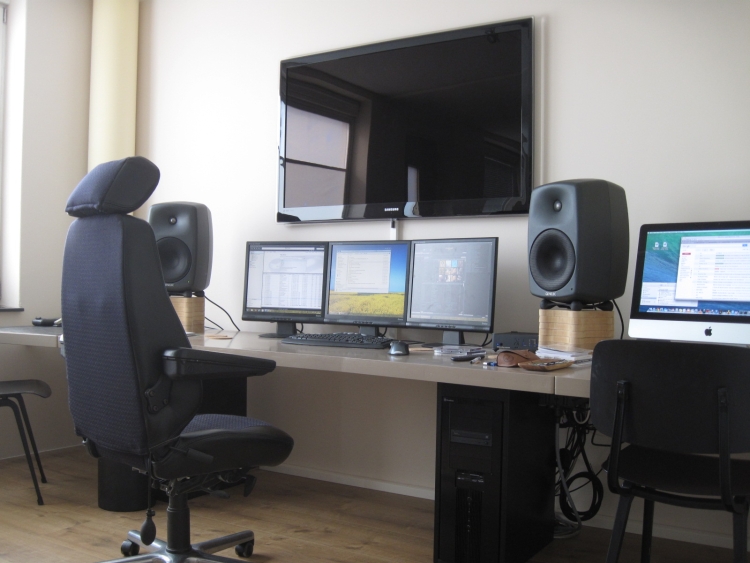
Genelec 8050 and Wadia 121 with a Computer Source in the secondary setup
It’s been quite some time since I wrote about optimizing computer audio. This is mostly because I found that dedicated audio players, such as Sooloos from Meridian and the AudioAanZee Ultra Flow, sound much better in my main system than anything I tried with the PC. Subsequently, I have been slow to jump on the Windows 7 bandwagon, simply because I never felt the need to optimize a music source that I didn’t use primarily anyway. This changed recently with the introduction of a pair of Genelec 8050’s in the secondary setup. Read on!
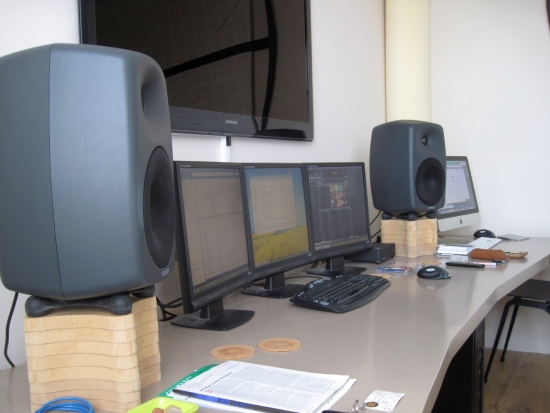
A correction on my computer audio views thus far
The main reason for my writing this article is to add more nuance to some of the beliefs that I have written about in many articles, and which sometimes contradict with sensible digital audio knowledge.
Although I have always known that in the digital world bit-perfect should be the way to go, I’ve argued that depending on circumstances, “bit perfect” needn’t actually sound most musical of all the available output options and that accuracy isn’t necessarily synonymous with better musicality. I still stand by this argument, inasmuch that the end result with any audio system depends on the sum of all parts and that above all, fine-tuning and careful matching are paramount.
However, some of my views on this have now changed. For example when I advocated WaveOut above DirectSound for use with Winamp 5 because it sounded more fluid, fuller and more relaxed, I deliberately used a non-bit perfect output method because I preferred the resulting sound, in the context of my main audio system. Also, when I found that computer sources always sounded synthetic, and I wasn’t enjoying the sound of my PC, or most of the Music Servers that I tried, again, this was in the context of my (very critical) main audio system.
Now that I have a new second audio setup in a second room, I found out that in this new context, indeed bit perfection is of prime importance and that, all things being equal, it should be the first step to get right. Moreover, I found that the feeling of artifice that I could so easily hear in the main system wasn’t much less present in the new system. At least not when using the PC as a source, with DB Poweramp and appropriate settings, and importantly, when connected directly with USB.
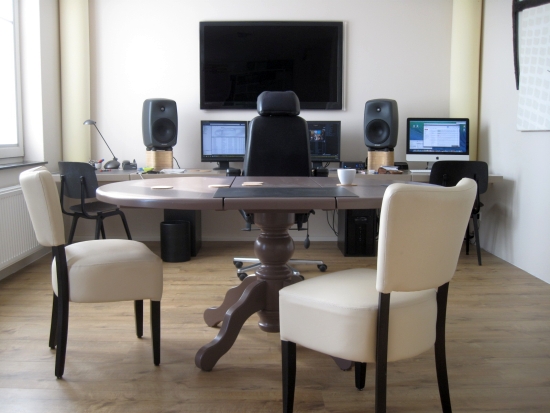
New listening system
By removing two walls in my house, I effectively created a big space from the combined two small rooms and a hallway. This space now functions as a secondary media/computer/TV room to the main listening room. For this now larger area I decided that the Harman Kardon GLA-55 weren’t up to the task anymore and so I upped the stakes by adding Genelec 8050 active speakers for both computer audio playback as well as for TV sound.
As often happens to audiophiles, upgrading one part of the system highlighted other weak areas in the system, such as the home theater amp that I used for its convenient HDMI switching. Its pre-out didn’t sound bad per se, but when I connected a SOtM sDP1000 DAC directly between PC (USB) and Genelecs, I knew in an instant that home cinema receivers weren’t going to cut it.
I’ll cut to the chase here (the complete story will be in “Audio History”) because this article is supposed to tell you more about optimizing computer settings and not to blabber on about myself. So, for the secondary setup, I eventually settled on a Wadia 121 DAC, that connects to the PC with a KingRex USB cable and, at this stage still very standard, DAP XLR cables. I paid attention to the power and phasing, using CP Audio extension blocks, IeGO power connectors and Lapp cable (5G 2,5 191CY). The computer is a pretty standard Intel Core i3 3GHz 8GB RAM PC running Windows 7.
The bottom line is that with this system, when seated at the desk and listening in the nearfield, I experience computer sound quite differently than I did in the main listening room with the Rowlands and Apogees.
Computer Audio System Sound
The Genelec 8050s are at once quite matter of fact, as well as pretty forgiving in nature. By the same token, they have excellent transient behavior as well as a very fluid sound. Lastly, they are quite uncolored yet they have very substantial, groovy, bass. As an audiophile, you would say that these speakers present something of a contradiction. As a sound engineer you would simply say that they are neutral, and if pressed an engineer could add that Genelecs are not quite as honest, or ruthless, as some other monitors can be. Which is the correct view? Both of course. The thing is that some high-end systems can be unforgiving and can really give the owner a hard time with less than perfect recordings. What happens next is that every little aspect of the system is tuned until the system is more forgiving. In the process, often, something gets lost, such as PRAT, transient attach or dynamics. This has happened to me too in the past. The Genelecs show me that to a very small extent, this is still the case in my present main system. But in my defense, the main system is listened to at a distance of 7 meters, while the Genelecs, being near field monitors, are listened to in the near field.
KISS
Another thing going on here is simplicity, or the lack thereof. “Keep It Simple Stupid” Is often advocated, and not without reason. But in my main system I have always found that you could simply go too far with simplifying. For example, removing the preamp and using the CD player’s or DAC’s volume control would invariably result in a sterile sound lacking harmonics. The same happened when removing the Battery Power Supplies or using simpler cabling, as this invariably came at the expense of a threadbare, overly controlled sound that I just could not enjoy. In the Genelec system, however, simplification apparently comes without penalties.
Genelec 8050 performance
Although the Genelecs don’t do some of the things that my main system is capable of, I find that I am still very much enjoying the sound. One strength is low-level detail: while not up to true ribbon standards, I really like the 8050’s treble performance. Being a ribbon guy I guess this says something. But the Genelec setup also sounds very good, just because it is kept simple. This setup may not sound as large and enveloping, or as airy and subtle as the big setup, but it’s still a thoroughly enjoyable performance. And, resolution isn’t very far off either, same for focus and soundstage width: all very good. And importantly, the image is rock-solid, it doesn’t shift when moving your head, and there are none of the comb-effects that I have in the main system due to the Apogees’ 3-way ribbons. The only obvious thing missing is soundstage depth and layering, but this is likely a function of them being placed so close to the rear walls. All in all, I find that I am very much enjoying their neutral, uncomplicated and uncolored delivery. This is topped off with powerful deep bass, refined treble and overall forgiving nature.
So, it is obvious by now that I am happy with the Genelec setup, and that the reason for this is mostly simplicity and near-field listening. Don’t underestimate however the difficult nature of Apogee Divas: they are very difficult to get right and then there are the listening room’s contributions, with various peaks and throughs, even if line sources such as Apogees don’t seem to be bothered much by floor and ceiling reflections. Frequency response is very flat however, and the biggest problem in my case is bass suckout at the listening position.
The Genelec setup btw isn’t free from room colorations either: in this case, I have a few huge bass peaks starting at 120hz that I aim to cure with the aid of some bass traps, but that’s for later. Even with uneven bass frequency response, there really is something about this system that is very appealing. I perceive it as a one-ness, total coherence, perfectly timed sound that avoids tipping over into a clinical or unforgiving sound. Purists have said it for ages: two-way speakers can more easily sound spot-on (perhaps not as much in terms of frequency response but more in terms of timing and coherence) than more complex 3-way designs. That the Genelecs have built-in bi-amplification further adds to the simplicity and purity because the passive filter can be bypassed. Where it did not sound right when I switched to an active crossover with the Divas in the main setup, for the Genelecs this is obviously the best choice.
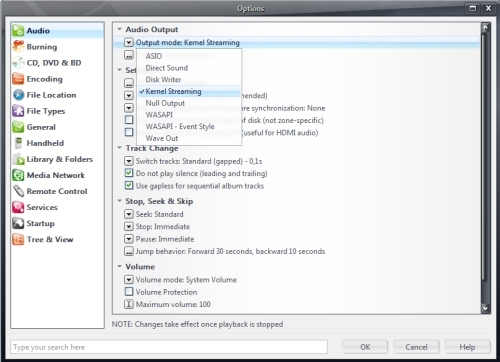
Application tweaking – W7 and jRiver Media Center
It’s with the Genelec system that I started playing again with the various settings in Windows 7 and applications Winamp and JRiver Media Center. Having known all the ins and outs in XP, I now had to familiarise myself again with the W7 peculiarities but that was easy, using the excellent JRiver wiki as well as this very detailed article on Computer Audiophile.
My starting point initially was a generic Wiki page: Legacy Audio Components. These pages should tell you all you need to know and there is really no use in me repeating what it says there. I’ll just jump straight to what worked best for me.
As hinted at above, using my new Genelec/Wadia computer setup, both Winamp and Media Jukebox sound best when using the most direct and most accurate signal output. By the way, while I previously judged JRiver’s Media Jukebox (free) to sound full and somewhat lacking in PRAT, this certainly isn’t the case for Media Center (paid version). But this shouldn’t suggest that the paid version sounds better, more likely that I now used the correct settings, basically any other output method than WaveOut.
Winamp 5 may be my preferred choice for its easy file-handling (and the absence of the obsessive need to import music instead of simply playing it), it is not compatible with Kernel Streaming (unless an unstable plugin is used), let alone Wasapi, in the new setup, Winamp clearly loses out in sound quality, sounding blurry and soft on the transients. So, for ultimate sound quality Winamp is out. That leaves JRiver Media Center. This app is like a chameleon soundwise. It can sound tight and clean like Foobar or smooth and thick like Winamp, depending on the settings chosen.
Key setting in Windows 7 is setting the audio device to Exclusive Mode in the JRiver Media Center settings. Second, enable both Exclusive Mode settings in Windows 7 Speaker Properties. Now the playback app, in this case, Media Center, dictates bitrate and sample rate, and other apps cannot interfere anymore. Moreover, Windows itself has nothing to say anymore.
In Media Center Audio Output settings, choose the mode of your choice. Wasapi and Wasapi Event Style offer the best sound quality, truest to the source. Depending on your taste, however, you may like to choose Kernel Streaming, as I eventually did, for its more fluid and relaxed presentation. Don’t worry though as either of these three methods sends bit accurate date to the audio device. So, where the difference in sound comes from is a mystery to me, but I sure am not imagining things. I’d say try it yourself. But in any event, don’t choose Wave Out, as I advocated previously, as this makes the sound wooly and undynamic. Clearly I had some compensation going on previously in my setup.
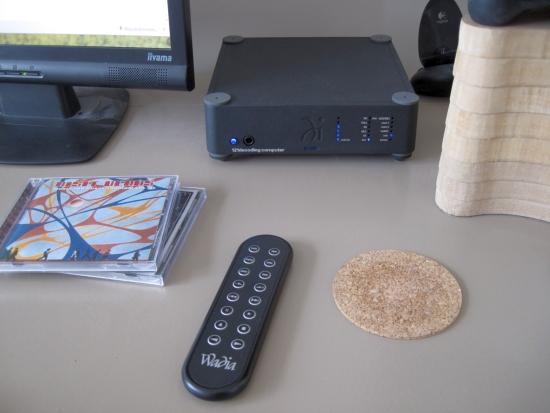
Computer Source
The interesting thing to note is that the computer really sounds excellent with these speakers. It’s much better than the Wyred4Sound Sonos ZP90 connected to the Wadia 121 via Belden RG59 coax cable. While I have previously found the PC to sound decidedly digital and synthetic, this is not the case here. The big difference is not only in the speakers but of course that the computer plays directly via USB, not via the HiFace EVO USB/SPDIF converter. While I have done this before in the main listening room, connecting the PC directly to the Ayre QB9, this did not sound as good as it does now, which really votes for the Wadia 121 – Genelec 8050 combination. Used in this context, the Genelecs seem to make the best of computer sources, but only as long as you get the computer settings right.
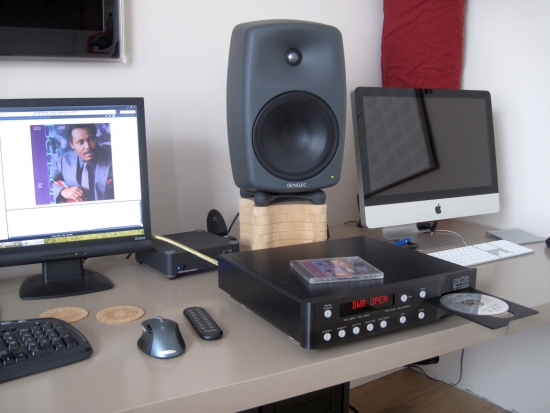
CD source
Since my trusty computer sounded so right in this secondary setup, I wondered if a high-end CD transport would bring the same advantages as in the main listening system. In came the Levinson 37 CD transport. This is the predecessor of the 390S CD player, and apart from the built-in DAC, it is very, very similar to the integrated player. It sounds better though, but likely because the internal transport has been renewed while the one in my Levinson 390S is by now over 12 years old.
Regular readers know how I praised the CD medium to sound more fluid, more full-color and more analog-like than any computer-source, the best of Meridian Sooloos and my preferred AudioAanZee Ultra Flow included. I recognise that while the computer sources may well sound more accurate, in my main system at the time they just did not match as well as a really good CD player, because the latter compensated precisely where the system needed it.
As you may have guessed, the situation is different in the Genelec setup: sure, CD still sounds more continuous/fluid, but with the distinct disadvantage of also sounding less well-resolved and, would you believe me, less airy treble! What’s more: even if I can hear that the CD transport sounds more free-flowing, in this case it is no longer a benefit but rather a downside. In this setup, the computer, boys and girls, actually sounds more refined and more involving to me now.
The rub
While I know that Wasapi and Wasapi Event Mode are the preferred choices, these are technically superior, and they do indeed sound tighter and transients are even more defined, for my tastes, this is a little too much, and I found that with most recordings using jRiver Media Center 18 I preferred old style Kernel Streaming, for its more relaxed, more fluid nature, even in the Genelec Setup. I’m just a relaxed kind of guy I guess. So, does this partially negate my initial debunk of my own beliefs?
Well… who cares. But whatever you do – Don’t forget to enjoy the music!
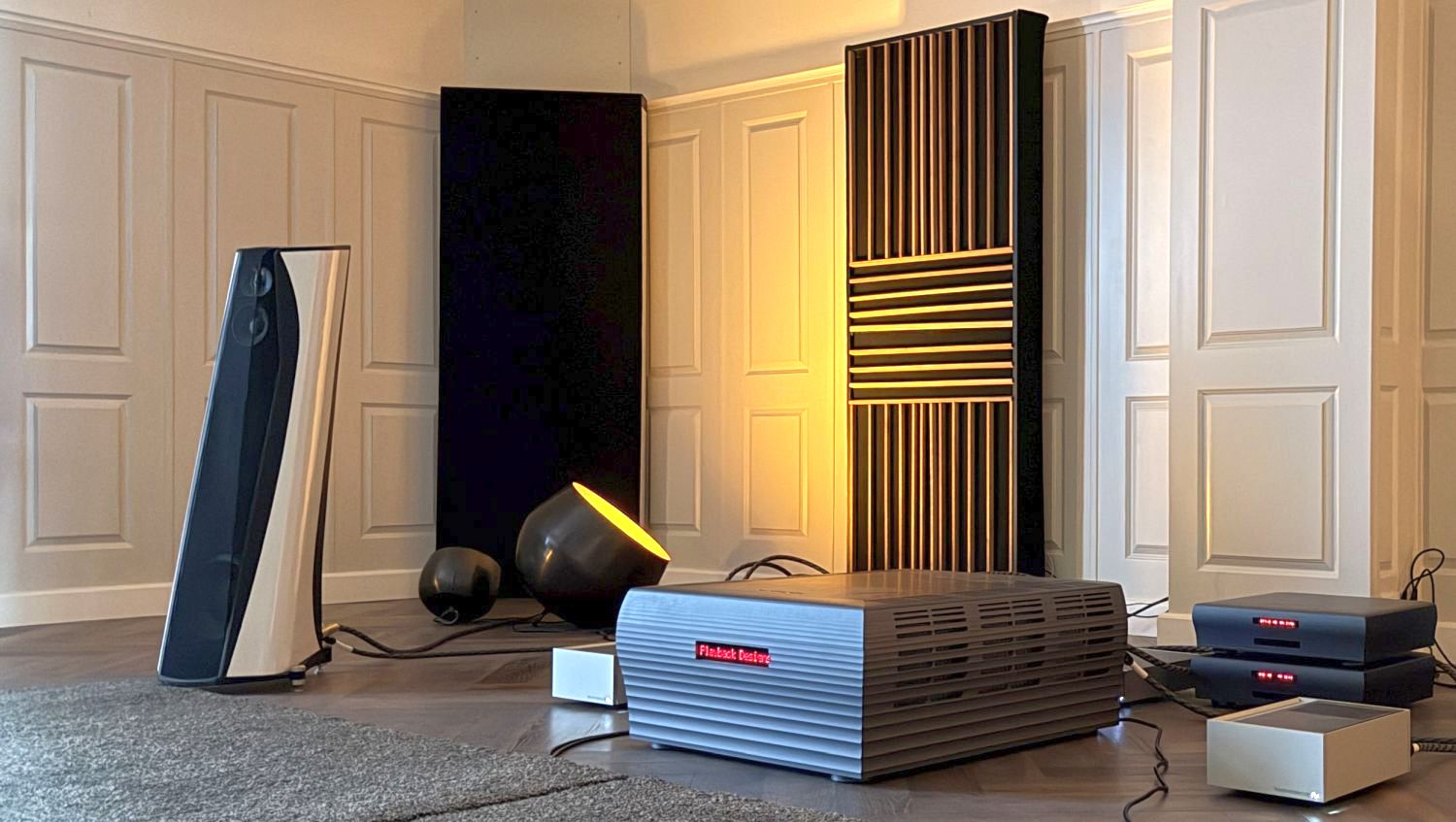
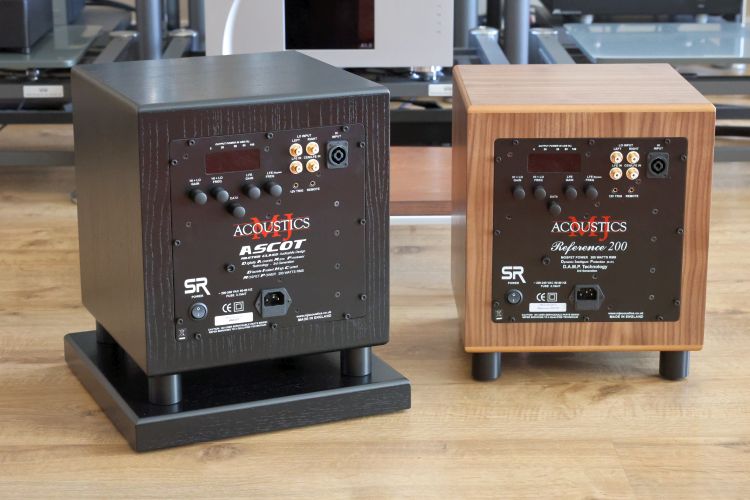
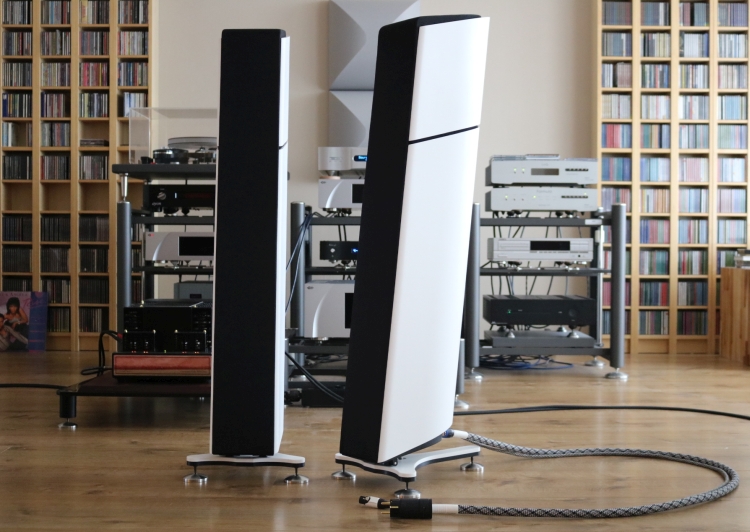
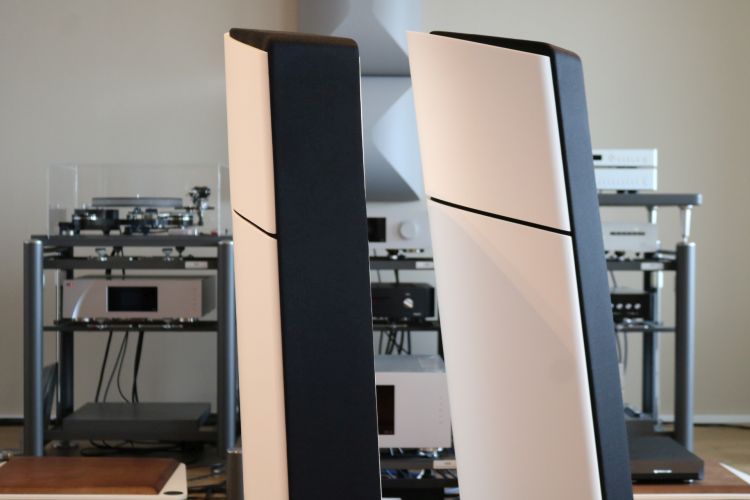
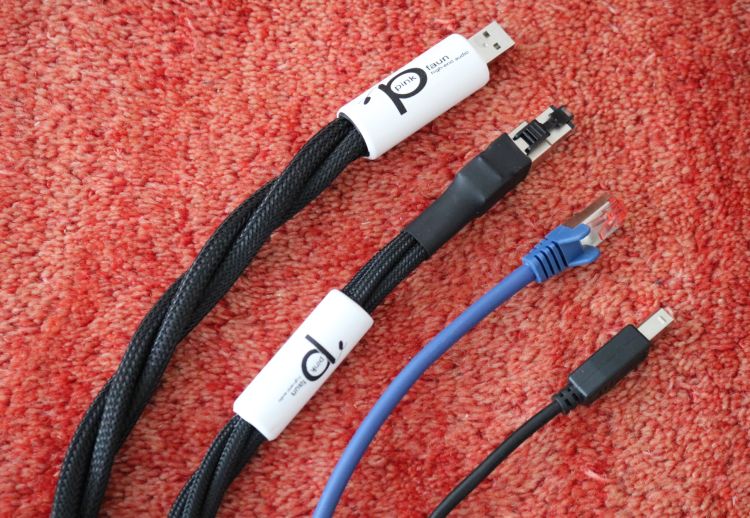
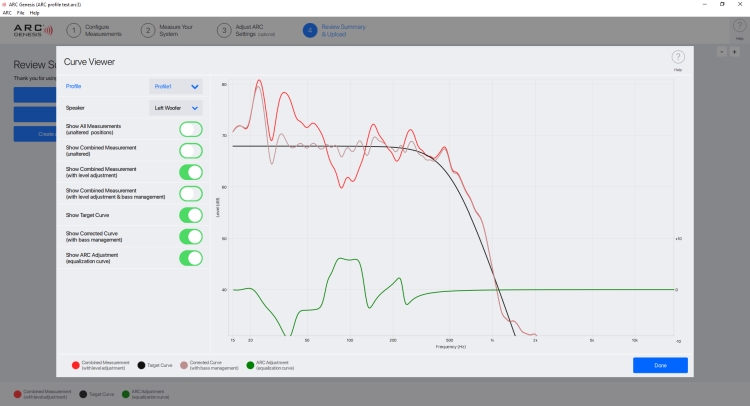
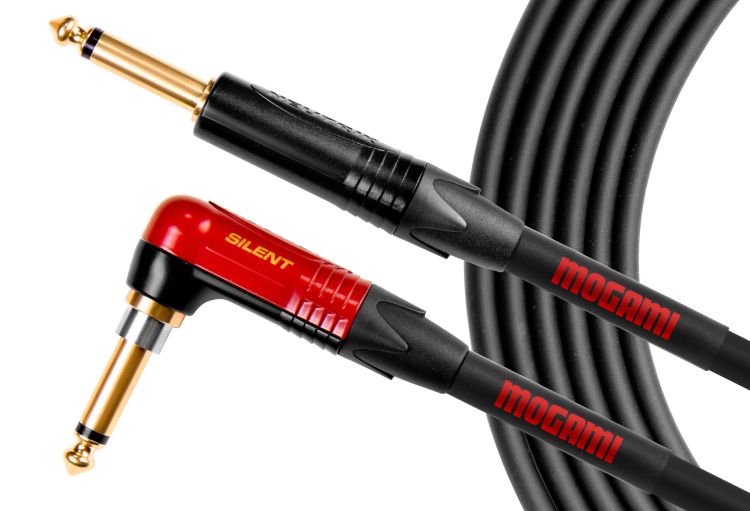
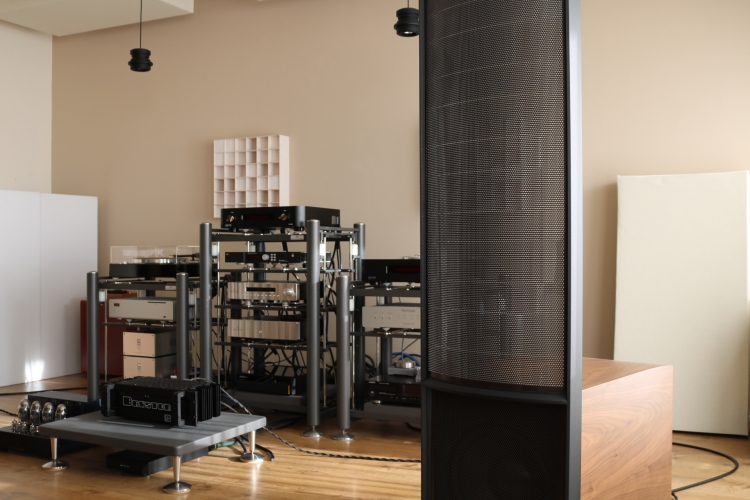
May I ask, are those stands custom made or available commercially?
Thanks,
R
Hi Ronny, I made these myself from 18mm slices of MDF. The idea was to glue them together, sand them then paint them. That never materialised as the Genelecs sounded better when not set up on the desk. See the latest “Current Media Room Audio Setup” section to see what it looks like now. Where are you located? If you live nearby enough then I’d be happy to pass them on to you.